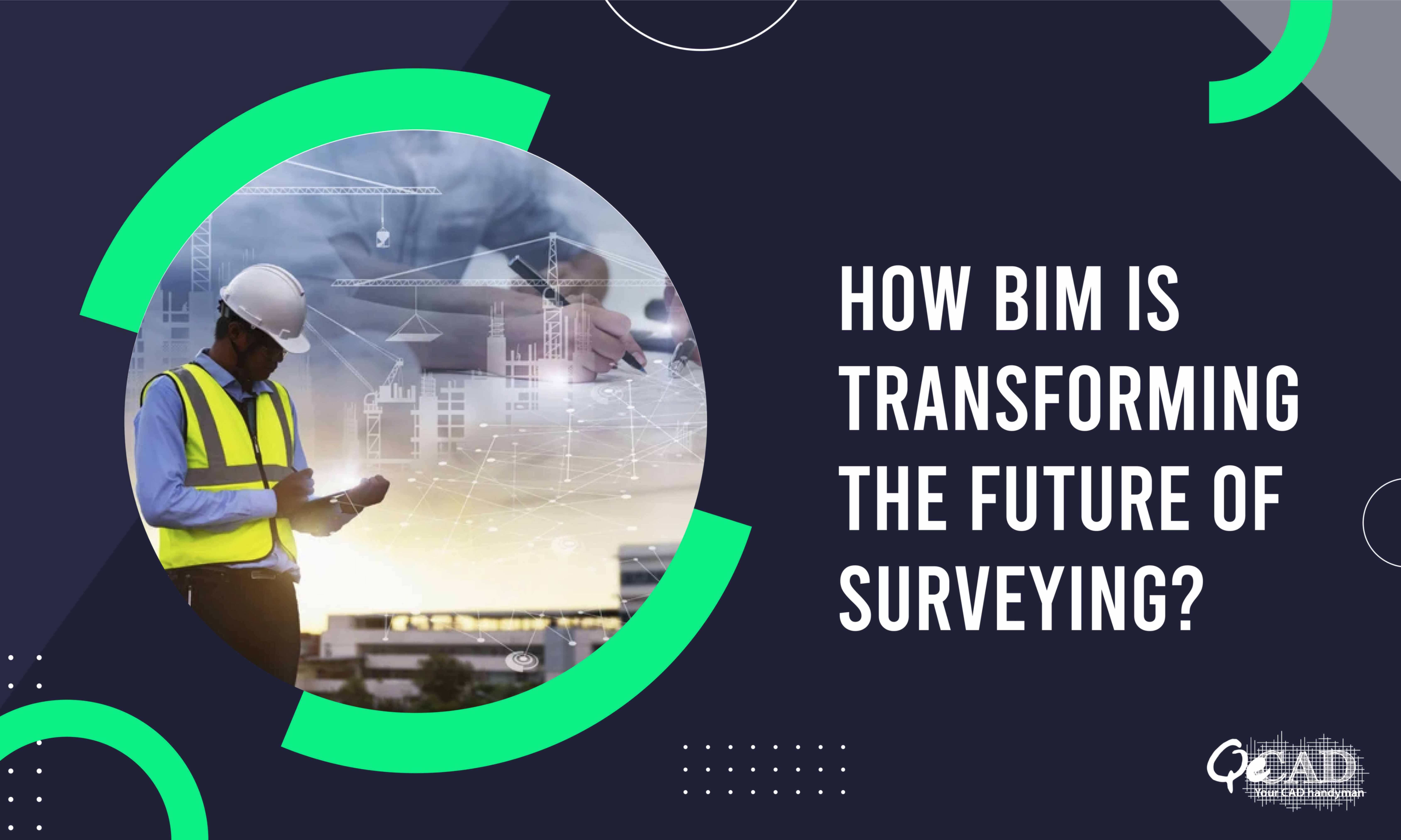
BIM has transformed the construction and architecture industries by offering a digital model that captures both the physical and functional aspects of structures. While its impact is well-documented in design and construction phases, BIM’s role in surveying is increasingly gaining traction for its transformative potential.
This blog explores how BIM is used in surveying, highlighting its benefits, applications, and the future of this synergy.
Understanding BIM in Surveying
Before diving into its application and specification, it is crucial to understand what exactly BIM entails. BIM is a digital tool that creates a detailed 3D model of any residential, commercial, industrial or infrastructure project. It integrates data across various disciplines. In surveying, BIM helps to create a digital twin of the physical world thereby allowing for detailed analysis, accurate measurements, and efficient project management.
Enhancing Accuracy and Efficiency
- Improved Data Integration
Surveying typically involves capturing of a vast amount of data related to any land or buildings. Traditionally, this data was collected through various means—total stations, GPS, laser scanners—and then it was manually fed into different software systems. BIM streamlines this process by integrating all surveying data into a single digital model using accurate Scan to BIM Services. This integration helps in minimizing errors, reducing redundancy as well as making sure that all team members have access to the consistent and accurate information. - Real-Time Data Visualization
One of the main advantages of BIM in surveying is its ability to visualize the data in real-time. The surveyors can use the BIM software to view and analyze the topographical data, building footprints, along with other essential elements as they are collected. This real-time visualization allows in making immediate decisions, adjusting plans on the fly thereby ensuring that the data aligns with the project’s requirements. - Enhanced Accuracy Through 3D Modeling
The traditional surveying methods often used to produce the 2D representations. This led to misinterpretations or errors in spatial relationships. BIM, however, leverages the 3D modelling to offer a more comprehensive view. This three-dimensional perspective illustrates the accurate measurement of distances, areas, and volumes. This information is important to ensure that the constructed environment matches the design specifications.
Applications of BIM in Surveying
- Site Analysis and Preparation
Before beginning of any construction, a thorough site analysis is a must. BIM helps in this by providing a detailed digital model of the site including its topography, existing structures along with other physical characteristics. The surveyors can even use BIM to assess the site conditions, identify potential challenges, as well as make data-driven decisions about the site preparation. - As-Built Documentation
As-built documentation is very important in the surveying process. It ensures that the completed project aligns well with the original design. BIM helps the surveyors to create accurate as-built models that depicts the ultimate constructed state of a project. These models serve as a valuable reference for future maintenance, renovations, or remodelling. - Clash Detection and Coordination
In complex projects, different systems—such as structural, mechanical, and electrical—needs to be coordinated. BIM helps in identifying any clashes between these systems at the design stage itself. By incorporating surveying data into the BIM model, the surveyors can identify potential conflicts between different elements before even the construction begins. This minimizes the likelihood of costly errors and rework.
Benefits of BIM in Surveying
- Enhanced Collaboration
BIM fosters collaboration among different stakeholders by providing a shared platform where surveyors and other AEC professionals can access and work on the same model. This collaborative approach ensures that everyone involved in the project are on the same page and has the most up-to-date information. This leads to fluent and hassle-free coordination. - Increased Efficiency
The integration of surveying data into BIM streamlines the workflows and reduces the time required for data processing as well as model creation. BIM enables surveyors to concentrate more on analysis and interpretation, reducing the need for manual data entry. This efficiency accelerates project timelines and reduces costs by minimizing delays and the need for rework. - Improved Project Management
BIM provides a comprehensive view of the entire project lifecycle right from the initial site surveys to the final construction. This holistic perspective allows for better project management including more accurate scheduling, budgeting, and resource allocation. The surveyors can use BIM to track progress, identify potential issues ultimately ensuring that the project stays on track.
The Future of BIM in Surveying
With the technological evolution, the role of BIM in surveying is expected to evolve even further. The emerging trends such as artificial intelligence (AI) and machine learning are likely to enhance BIM’s capabilities, making data analysis even more efficient and insightful. Additionally, the integration of drone technology and advanced scanning techniques will provide even more detailed and accurate data for BIM models.
The increasing adoption of BIM Outsourcing Services in surveying also signals a shift towards more data-driven decision-making. The surveyors will have access to a more comprehensive datasets thereby enabling them to make better decisions and contribute to more successful project outcomes.
